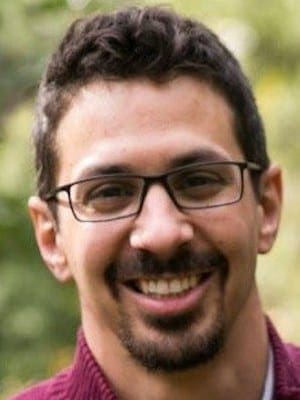Landscapes throughout the Middle East and North Africa (MENA) region have been transformed by unfolding crises of forced migration.
This is especially the case in Lebanon. An estimated 1.5 million Syrian refugees reside within its borders, adding layers of dimension to long-existing populations of displacement.
According to the U.N. Relief and Works Agency (UNRWA), Lebanon hosts a Palestinian refugee population of around 450,000. It also hosts a considerable number of Iraqi refugees and local stateless communities.
With its small geographic size and high number of displaced persons, Lebanon boasts the world’s largest per capita refugee population.
Many Syrian refugees reside in informal tented settlements. These accommodations offer rudimentary living conditions deficient in space, water, sanitation, electricity and protection from the elements.
To experience conditions of displacement is to experience a very real and pungent form of suffering. Yet for many outsiders, an experience is exactly what they seek.
Faith communities in recent years have initiated efforts to serve victims of displacement as they rightly recognize that the current times are presenting an opportunity to demonstrate the gospel mission of the church.
As humanitarian responses have increased in the past half-decade, so has the flow of foreigners travelling to the MENA region to see the situation firsthand.
Oftentimes, travelers are connected to local organizations actively operating poverty alleviation and spiritual outreach programs to refugees and other vulnerable communities.
It is not uncommon for a trip itinerary to include visits to poverty centers, such as a tent settlement community, refugee camp or urban slum.
These types of encounters are oftentimes what I refer to as a “sufferari” because of the disturbing way they resemble a recreational safari.
This is how I (tongue firmly in cheek) see such experiences playing out:
A group of foreigners and their local guide navigate rugged landscapes in large vehicles with the intent to experience an “authentic” encounter with refugees in their natural habitat. Rural tent settlement communities are widely considered prime locales.
Sometimes, participants are content to merely observe from a safe distance, but many prefer to personally engage with the refugees and undergo direct interaction with these “creatures of displacement.”
This usually involves entering a refugee family dwelling, sitting on worn-out floor cushions and drinking glasses of sweetened tea. The guide will help navigate communication between the parties so that refugees can express how terrible it is to flee war and seek refuge in another country.
Visitors may try to offer some uplifting words or they may simply sit quietly and observe the misery presented before them. Oftentimes, the displaced young will put on lively displays of energy, youthfulness and warmth, much to the delight of the tourists who find these little faces especially charming objects of photography.
After the short time, participants depart and return to their comfortable accommodations emotionally unsettled but rather contented to have had their own taste of displacement’s bitterness.
Thoughts will be shared in emails, newsletters and status updates, pictures will be posted on social media, and financial ties will be strengthened between the outsider and local parties. Meanwhile, the refugees remain where they are. Their suffering endures.
The sufferari is by no means limited to victims of displacement; one can travel the world in search of casual encounters with individuals and communities of suffering.
It happens in urban ghettos, shanty towns, impoverished rural communities and other areas of marginalization.
Celebrities, dignitaries and common-folk alike undertake celebrated excursions into some of human society’s harshest environments.
I personally have been part of sufferaris, sometimes as a tourist, sometimes as a student and sometimes as a guide.
These are experiences that compel me to reflect honestly on the venture of personal engagement with the suffering, especially the displaced.
We must ask, “Is such an activity wrong?” Not necessarily.
The world is full of extreme suffering, and it is necessary to be exposed to this. The very nature of biblical faith is rooted in the truth of the incarnation, an uncompromising statement that God in Christ came intimately near to humanity’s suffering and likewise commands us to go near to the suffering of others.
While one can learn much from the media and correspondences, personal experiences continue to be the most effective way to grasp the complexities facing the poor, the displaced and the oppressed.
Additionally, many relief, aid and development organizations are dependent on outside funding in order to provide support to those in need, and arranging personal engagements is a meaningful way to profile services and engage donors.
Such activities often happen with good intentions, but their implications must be considered critically.
Brent Hamoud is programs manager for a boys’ home in Mount Lebanon associated with Kids Alive International and oversees a literacy program in South Lebanon. He is a 2016 Institute of Middle East Studies graduate. A version of this article first appeared on the IMES blog and is used with permission. His writings also appear on his blog, and you can follow him on Twitter @ThisHamoud.
Editor’s note: This article is the first of a two-part series. Part two is available here.
Programs coordinator at the Arab Baptist Theological Seminary in Beirut, Lebanon.

